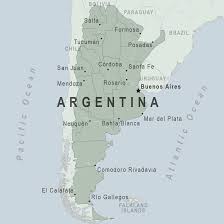 Early Jewish immigration to Argentina from Europe began in the 16th century, continuing into the 17th and 18th, with secret Jews, or conversos, coming to Argentina to escape the Spanish Inquisition. After Argentina gained independence from Spain 1816, there was a spike in Jewish immigration, mostly from France, with others coming from England and Germany. This was followed by Russian immigrants, known as Rusos.
Early Jewish immigration to Argentina from Europe began in the 16th century, continuing into the 17th and 18th, with secret Jews, or conversos, coming to Argentina to escape the Spanish Inquisition. After Argentina gained independence from Spain 1816, there was a spike in Jewish immigration, mostly from France, with others coming from England and Germany. This was followed by Russian immigrants, known as Rusos.
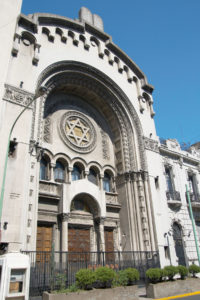 Towards the end of the 19th century – when Argentina had been declared a republic and the state was operating an open-door policy to people from Europe to populate the nascent country – Jewish migration began to happen en-masse. However, many were disappointed to find the fertile lands promised to them for agriculture on arrival were not as they had hoped.
Towards the end of the 19th century – when Argentina had been declared a republic and the state was operating an open-door policy to people from Europe to populate the nascent country – Jewish migration began to happen en-masse. However, many were disappointed to find the fertile lands promised to them for agriculture on arrival were not as they had hoped.
They ventured north and south in search of somewhere to settle, and over the coming years Jewish agricultural settlements were established in Santa Fe, Buenos Aires and Entre Rios. At the turn of the 20th century another wave of immigration diversified the community, with Sephardic Jews arriving from Turkey and North Africa.
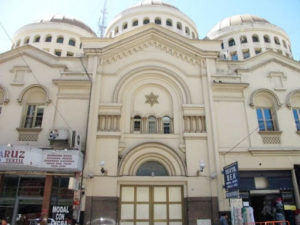 In Santa Fe, there is a colony called Moisés Ville, which was founded in 1889 by Ukrainian Jews who fled from murder and persecution in their homeland, on the SS Wesser. These Jews learned riding and herding and became Jewish Gauchos. They farmed the land and introduced new crops like rice and sunflowers to Argentina. The community built four synagogues, Jewish schools, and Argentina’s first Jewish cemetery. Today 250 Jews still reside in the town.
In Santa Fe, there is a colony called Moisés Ville, which was founded in 1889 by Ukrainian Jews who fled from murder and persecution in their homeland, on the SS Wesser. These Jews learned riding and herding and became Jewish Gauchos. They farmed the land and introduced new crops like rice and sunflowers to Argentina. The community built four synagogues, Jewish schools, and Argentina’s first Jewish cemetery. Today 250 Jews still reside in the town.
Colonía Mauracio was set up in Buenos Aires province. The Algarrobos Cemetery and Moctezuma synagogue are still visited by travellers. Entre Rios was another province where Jewish settlers established themselves, with eleven Jewish colonies in total.
During the First and Second World Wars the Jewish population increased again, with people fleeing Jewish persecution by the Nazis. Due to antisemitism, Argentine borders became more tightly controlled, reducing immigration. Juan Peron’s rise to power in 1946, worried many Jews because of he was a Nazi sympathizer with fascist leanings.
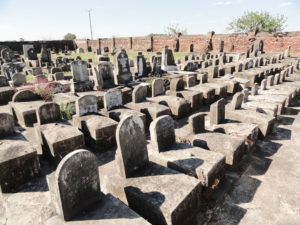 Peron halted Jewish immigration to Argentina, introduced Catholic religious instruction in public schools and allowed Argentina to become a haven for fleeing Nazis. He also expressed sympathy for Jewish rights and established diplomatic relations with Israel in 1949.
Peron halted Jewish immigration to Argentina, introduced Catholic religious instruction in public schools and allowed Argentina to become a haven for fleeing Nazis. He also expressed sympathy for Jewish rights and established diplomatic relations with Israel in 1949.
Peron was overthrown in 1955, which was followed by another wave of anti-Semitism. Many left the country for Israel after 1955. In 1960, Israeli agents abducted Adolf Eichmann from a Buenos Aires suburb. The Eichmann trial in Jerusalem, in April 1961, aroused further anti-Jewish sentiment in Argentina. Argentina was under military rule between 1976 and 1983. During this period, Jews were increasingly targeted for kidnapping and torture by the ruling junta; about 1,000 of the 9,000 known victims of state terrorism were Jews.
 In the 1980s, two terrorist attacks devastated the community. First, the destruction of the Israel embassy in 1992, killing 29 people. Two years later, in July 1994, the Jewish community center (AMIA) was bombed, killing 85 people. In 1998, Banco Patricios collapsed, taking with it millions of Jewish dollars. The community was particularly affected by Argentina’s economic crises in the early 1990s and 2000s, and many Argentine Jews migrated to Canada, the United States and Israel.
In the 1980s, two terrorist attacks devastated the community. First, the destruction of the Israel embassy in 1992, killing 29 people. Two years later, in July 1994, the Jewish community center (AMIA) was bombed, killing 85 people. In 1998, Banco Patricios collapsed, taking with it millions of Jewish dollars. The community was particularly affected by Argentina’s economic crises in the early 1990s and 2000s, and many Argentine Jews migrated to Canada, the United States and Israel.
In 2001 there were many poor people in the Jewish community from the middle class, who had lost their jobs or could not access their bank accounts, which the government had frozen because of bank runs. During this time, approximately 4,400 Argentine Jews made aliyah to Israel.
Following the 2003 economic recovery and subsequent growth, Argentine immigration to Israel leveled off, some who had left for Israel returned to Argentina. Altogether, some 10,000 Argentine Jews immigrated to Israel during the 2000s. Due to the economic situation, several Jewish institutes such as schools, community centers, clubs and congregations merged.
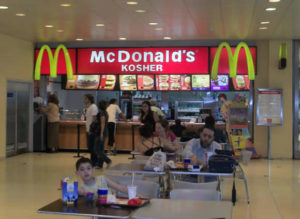 Buenos Aires is the largest Jewish population in Latin America. There are around 180,000 – 200,000 Jewish people in Argentina. The vast majority of these are located in Buenos Aires, though smaller communities can be found in other parts of the country, especially Rosario, Córdoba and Santa Fe.
Buenos Aires is the largest Jewish population in Latin America. There are around 180,000 – 200,000 Jewish people in Argentina. The vast majority of these are located in Buenos Aires, though smaller communities can be found in other parts of the country, especially Rosario, Córdoba and Santa Fe.
Argentina boasts a large number of Jewish educational institutions, including kindergartens, day schools, elementary and secondary schools. More than 60% of Jewish Argentine youth attend one of these institutions.
In Buenos Aires alone, 17,000 Jewish children study in the Jewish educational system. Some of the most spectacular synagogues include: the Grand Temple of Paso, Yesod Hadath, a large Sephardic synagogue dating to 1920, and Recoleta’s Sinagoga de la Congregación Israelita (commonly called Libertad). There are also 18 Jewish cemeteries located in Argentina, of those seven are still active.